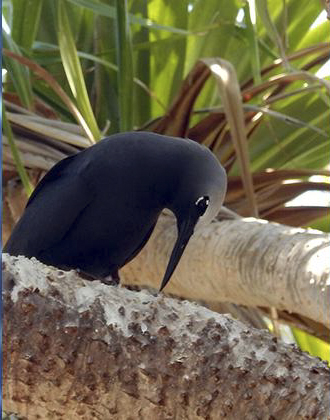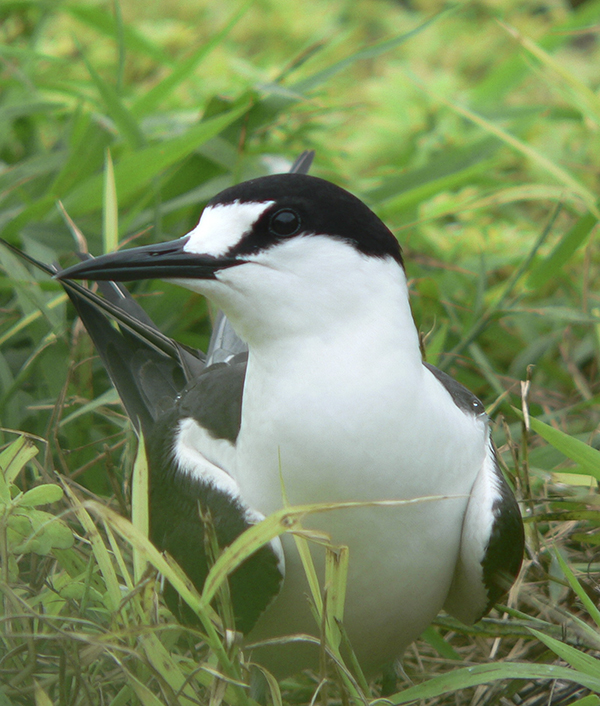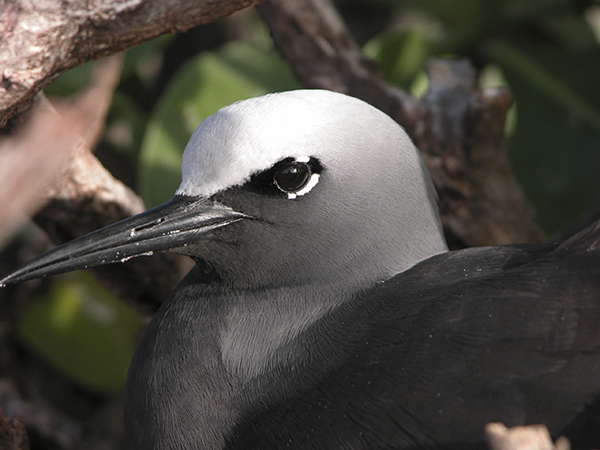Published in the Ocean Watch column, Honolulu Star-Advertiser © Susan Scott
October 24, 2015
LADY MUSGRAVE ATOLL, Great Barrier Reef >> After a 10-hour sail to this national park, I launched Honu’s dinghy to visit the island inside the circular reef. I expected a tranquil beach walk followed by a peaceful picnic. Instead I could barely hear myself think for the flocks of calling, courting and nesting seabirds.
 On Lady Musgrave Atoll a black noddy does what it does best.
On Lady Musgrave Atoll a black noddy does what it does best.
©2015 Susan Scott
Loudest were the sooty terns, black-and-white seabirds found throughout the world’s tropics, including Hawaii.
Wildlife workers affectionately call the 13-inch-long birds sooties but because the terns shriek 24/7; their nickname is wideawakes. The distinctive calls are a pleasant nighttime sound at sea when flocks of sooties, attracted to Honu’s mast-top lights, circle the boat. The incessant screeches are so shrill, however, that biologists working in sooty colonies wear earplugs. No one knows whether sooties sleep. A Hawaii biologist told me that she once tried to design a study to answer that question. She failed because the only way you can truly tell whether a person or animal is asleep is to monitor brain waves, and she couldn’t figure a way to attach electric encephalogram leads to the birds’ little heads.
 Sooty Turn, AKA Wideawake. At Tern Island but same species.
Sooty Turn, AKA Wideawake. At Tern Island but same species.
Tern Island was named after the sooties.
©2015 Susan Scott
The other major noisemakers in this atoll’s 34-acre island are black noddies. Like sooties, these similar-size black seabirds with white caps are also widespread throughout the world’s tropics. Noddy calls, however, are easier on the ear, being more of a loud twang than a screech. Noddies are the courtliest of seabirds. Their name comes from prospective mates facing one another and nodding. The deep dips look like regal bows. When watching them I imagine one bird saying, “It’s an honor to meet you,” and the other replying, “The pleasure is all mine.”
Sooties are ground nesters but black noddies like trees. As a result, the island’s Pisonia forest is now packed with pinging, curtsying noddies looking for mates and building nests. When I sat on a log to eat lunch, busy noddies hopped around my outstretched feet collecting grass and twigs. The trees, in turn, like black noddies. Some chicks get hopelessly stuck in Pisonia trees’ gooey seeds. After the chick dies, its remains fall to the ground, adding essential nutrients to the soil. Park signs explain this natural process of fertilizing the trees and ask softhearted visitors not to save gummed-up chicks.
 Black noddy.
Black noddy.
©2015 Susan Scott
Because the Southern Hemisphere’s noddies are just beginning to lay eggs, I didn’t have the temptation. When I sailed here in June, midwinter, the only sounds I heard in the island’s dense forest were fat raindrops plunking onto fallen leaves. What a difference spring makes.